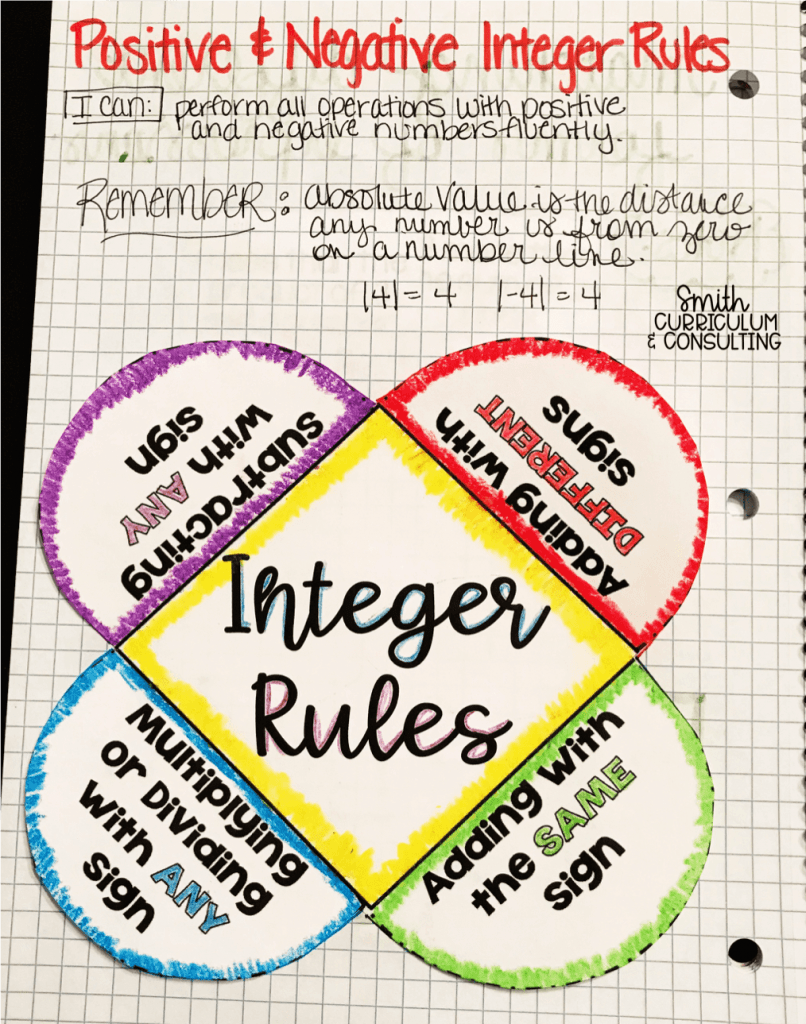
If the signs are different, the answer is always negative.Įxample: -25 ÷ 5 = -5 Thus, these are the rules to add, subtract, multiply and divide positive and negative numbers. If the signs are the same, the answer is always positive.

To subtract a number from another number, the sign of the number (which is to be subtracted) should be changed and then this number with the changed sign should be added to the first number. (‐) + (+) = Subtract the numbers and take the sign of the bigger number.(+) + (‐) = Subtract the numbers and take the sign of the bigger number.If the signs are different, subtract the numbers and use the sign of the larger number. (‐) + (‐) = Add the numbers and the answer is negative.(+) + (+) = Add the numbers and the answer is positive.If the signs are the same, add and keep the same sign. The following content shows the rules for adding, subtracting, multiplying, and dividing positive and negative numbers. The four basic arithmetic operations associated with integers are:Īnswer: There are some rules for adding, subtracting, multiplying, and dividing positive and negative numbers.īefore we start learning these methods of integer operations, we need to remember a few things. If there is no sign in front of a number, it means that the number is positive.
Math negative and positive rules generator#
Scroll down the page to the generator if you want to customize the worksheets yourself.Question: List down the rules for adding, subtracting, multiplying and dividing positive and negative numbers. To get a different worksheet using the same options, press 'refresh' in the browser window (only when viewed in browser). Remember that adding a negative number is the same as subtracting a positive one. For example: (7) + 4 3 6 + (9) 3 (3) + 7 4 5 + (3) 2 The sign will be that of the larger number. The answer key is automatically included on the second page. To get the sum of a negative and a positive number, use the sign of the larger number and subtract. They are randomly generated so unique each time.
Math negative and positive rules pdf#

Sometimes the generated worksheet is not exactly what you want.

This has the advantage that you can save the worksheet directly from your browser (choose File → Save) and then edit it in Word or other word processing program. Thus, we can say, integers are numbers that can be positive, negative or zero, but cannot be a fraction. Similar to whole numbers, integers also does not include the fractional part. To get the worksheet in html format, push the button " View in browser" or " Make html worksheet". In Mathematics, integers are the collection of whole numbers and negative numbers. To get the PDF worksheet, simply push the button titled " Create PDF" or " Make PDF worksheet". You can generate the worksheets either in html or PDF format - both are easy to print.

The answer key is automatically generated and is placed on the second page of the file. Note: variables with exponents are not included (such as practiced in an algebra course).Įach worksheet is randomly generated and thus unique. These worksheets are most useful in 6th, 7th, and 8th grade, when exponents are introduced and practiced. You can also make worksheets that have one other operation besides exponentiation (add/subtract/multiply/divide powers). Options include negative and zero exponents, and using fractions, decimals, or negative numbers as bases.


 0 kommentar(er)
0 kommentar(er)
